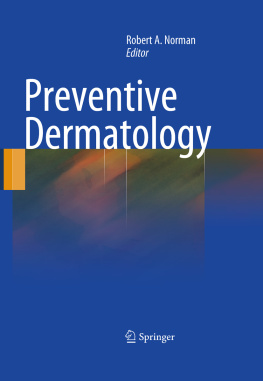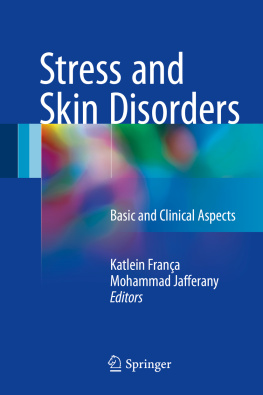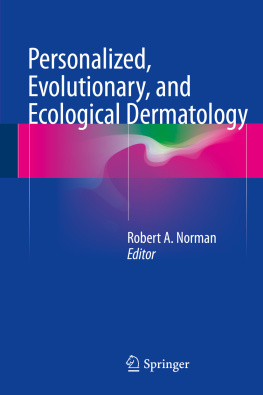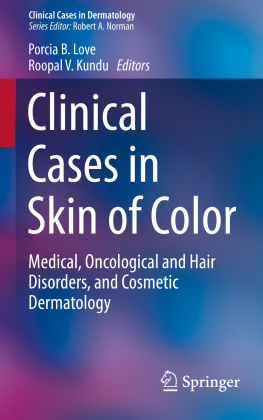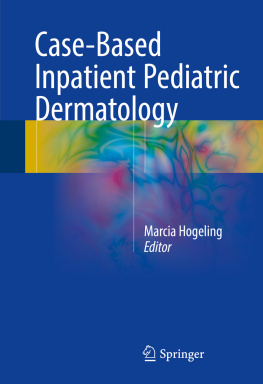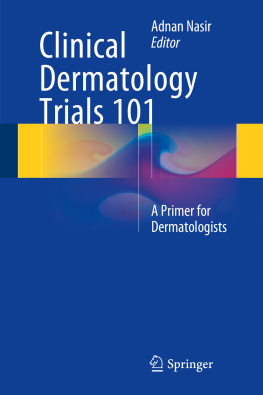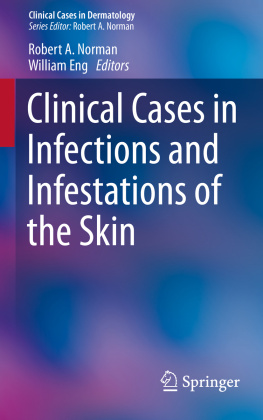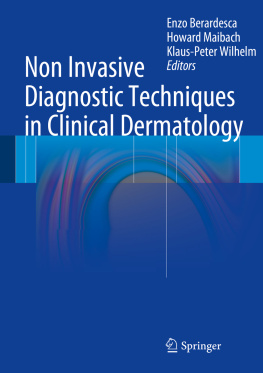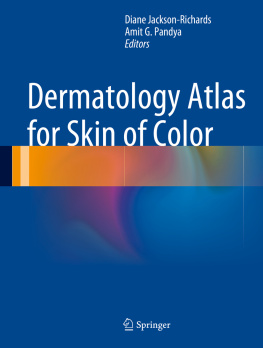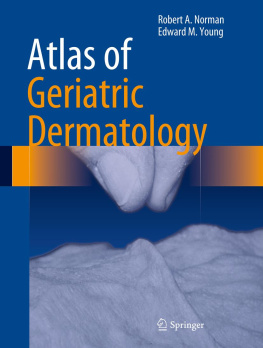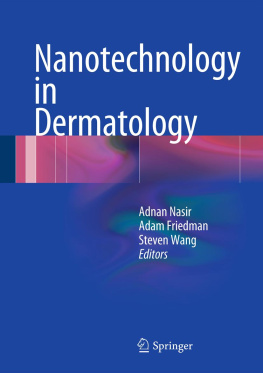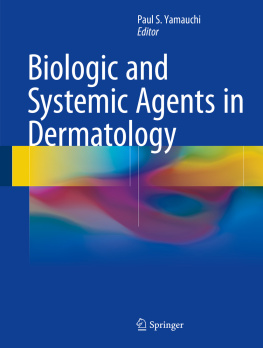Robert Norman (ed.) Preventive Dermatology 10.1007/978-1-84996-021-2_1 Springer-Verlag London 2011
1. Stress, Relaxation, and General Well-Being
Nana Smith 1 and Francisco A. Tausk
(1)
Department of Dermatology, University of Rochester, Rochester, NY, USA
Abstract
We instinctively understand that, in general, stress is an uncomfortable and deleterious physical and emotional state. However, it is often difficult to recognize and control. In dermatology, stress can be both a consequence and an instigator of disease. This chapter will explore (1) definitions of stress, (2) the interplay between stress and the skin, and (3) various stress-reducing modalities.
Your pain is the breaking of the shell that encloses your understanding. It is the bitter potion by which the physician within you heals your sick self. Therefore trust the physician, and drink his reme`dy in silence and tranquility
From The Prophet, Khalil Gibran
We instinctively understand that, in general, stress is an uncomfortable and deleterious physical and emotional state. However, it is often difficult to recognize and control. In dermatology, stress can be both a consequence and an instigator of disease. This chapter will explore (1) definitions of stress, (2) the interplay between stress and the skin, and (3) various stress-reducing modalities.
1.1 Stress
Stress encompasses a myriad of emotional and physical triggers which have a taxing effect on our bodies. Stress can be acute or chronic. As humans, we are well adapted to acute stress. Imagine the changes in our predecessors heart rate and blood flow in response to the proximity of a predator. However, it could be argued that the concept of chronic stress is a creation of the modern world. Our ability to adapt to chronic stress is not necessarily innate and requires a much more creative and active approach.
Stress can be considered as a disruption of balance which triggers various adaptive responses. Hans Selye, a 1930s endocrinologist, coined the term stress and defined it in terms of the General Adaptation Syndrome. Throughout his career he performed various experiments which showed that animals respond to stress in three stages. In the General Adaption Syndrome, the first stage is alarm. The physiology of this stage is well-understood and represents an acute response to stress. The sympathetic nervous system is activated, releasing catecholamines (CA) such as epinephrine and norepinepharine. This is the fight-or-flight response which causes blood to flow toward large muscular groups and away from the gastrointestinal system, the skin, and other organs. Walter Cannon, who in the 1920s first coined the term fight or flight The hypothalamic-pituitary-adrenal (HPA) axis is also stimulated, which releases hormones such as cortisol. Resistance is the second stage. Here the bodys coping resources are gradually diminished. In the final, exhaustion stage, the resources are depleted and the subject is unable to maintain homeostasis. Interestingly, the fight-or-flight response may now briefly reappear. However, with continued stressors, the adrenal gland and the immune system are sufficiently taxed and illnesses begin to manifest. This is analogous to a state of chronic stress.
The term allostasis refers to the balance between stressors and coping mechanisms; it is the ability to adapt to maintain balance and stability. This is a slightly different framework for stress than that defined by Seyle.
Acute and chronic stresses have different effects on our bodies. The effects are seen in the cardiovascular and endocrine/metabolic systems, the brain, and the immune system.
1.2 Stress, Immune Function, and the Skin
There is a complex interplay between stressors, the central nervous system, the endocrine system, immune function, and the skin. The HPA axis is stimulated by signals which are processed in the hypothalamus and the brain stem (locus ceruleus [LC]). In response to these stressors, the hypothalamus secretes corticotrophin-releasing hormone (CRH). From the hypothalamus, CRH-containing neurons communicate with the brain stem and spinal cord. CRH release further activates the HPA axis by causing the release of peptides from the pituitary. The peptides, such as adrenocorticotropic hormone (ACTH), enkephalins, and endorphins, are produced by the differential cleavage of pro-opiomelanocortin (POMC). ACTH induces release of glucocorticoids (GC) such as cortisol from the adrenal cortex. Activation of the noradrenergic pathways by CRH-containing neurons results in secretion of norpeinephrine (NE) by the sympathetic nervous system and release of NE and epinephrine (EPI) from the adrenal medulla. These are called CA. The activation of the sympathetic nervous system and the adrenal cortex and the subsequent release of hormones and neurotransmitters have significant effects on the immune system (Fig. ).
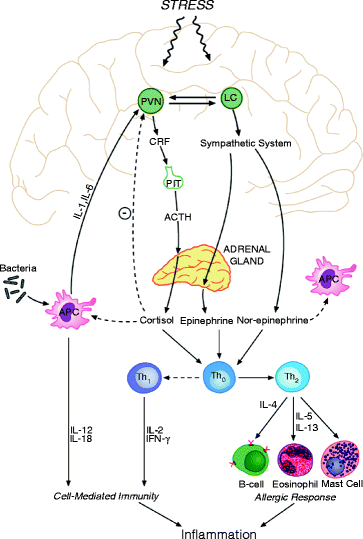
Fig. 1.1
The hypothalamic-pituitary-adrenal (HPA) axis and immunity. The identification of an external perceived stressor by the brain results in the activation of the paraventricular nucleus of the hypothalamus and the closely interconnected locus coeruleus. CRF is secreted from the hypothalamus and transported through the portal circulation to the pituitary, where it induces the release of ACTH from the anterior pituitary into the general circulation. The effect of this molecule results in the secretion of glucocorticosteroids and to a lesser extent CA from the adrenal gland. Cortisol will act as a negative feedback on the hypothalamus, inhibiting the release of CRF. The cells of the locus coeruleus have a rich neuronal connection with the PVN, and activate the sympathetic system which results in the secretion of epinephrine and nor-epinephrin. Both the cathecholamines and cortisol have a potent effect on the immune system. They modulate antigen presenting cells and macrophages inhibiting their activity and the production of IL-12 and IL-18, and they mediate the differentiation of nave T helper cells towards the TH2 constellation, in detriment of the development of TH1 mediated immunity. This results in tilting the balance towards humoral immunity by increasing the production of IL-4, IL-5, and IL-13, which activate B-cells, mast cells, and eosinophils, increasing the allergic inflammatory response. The chronic dampening of cell-mediated immunity could result in an impaired ability to confront effectively the development of infectious or tumoral insults. On the other hand, internal stressors are exemplified here by bacterial infections. The released bacterial lipopolysaccharides (LPS) bind to toll-like receptors on macrophages, and through NFkB induce the production of IL-1 and IL-6. These cytokines are able to cross the bloodbrain barrier and reach the hypothalamus, where they stimulate the secretion of CRF, initiating the activation of the HPA axis. In this manner, infections have the potential to shift the immune balance favoring the humoral TH2 mediated response. Diseases that involve this arm of the immune system such as autoimmune or allergic diseases would deteriorate during the presence of stressors of the internal as well as external kind. Stimulation ( straight arrows ). Inhibition ( broken arrows ). Reproduced with permission from Harth et al
In general, Th1-derived cytokines (IFN-, IL-2) are considered proinflammatory whereas Th2-derived cytokines (IL-4, IL-5, IL-10) are considered anti-inflammatory. Both GCs and CAs have the ability to create a shift toward the Th2 pathway by up-regulating Th2-cytokine production and also by suppressing APC production of IL-12 and Th1 cytokine synthesis). One main mechanism for the ability of GCs to suppress APCs is by inhibiting the costimulatory molecules necessary for T cell activation. GCs also decrease the ability of neutrophils to find sites of inflammation (decreased chemotaxis) and to attach to vascular endothelium and extravasate into the tissue.

